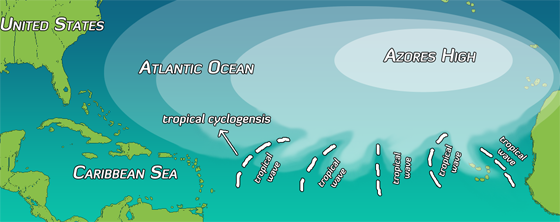The Azores Archipelago is characterized throughout the year by a mild climate with twelve months a year of average temperatures above 10 ° C. The climate in the Azores enjoys a favorable position as the islands are located in the temperate zone of the Northern Hemisphere. Average temperatures fluctuate between 14.1 ° C in February, and 22.1 ° C in August, even though temperatures have reached 28.8 ° C in the summer months. Excluding the top of the mountain of PIco (2,350m) the snow is unknown and there has never been a temperature below zero. In the same way the overwhelming heat that some other countries experience here is completely absent.
The climate in the Azores means that the air, which has a humidity almost never lower than 60% and generally higher than 70%, leads to a general increase in the perceived temperatures, absolutely comfortable therefore also in its highest peaks given the highest ever so high.
Precipitation is normally moderate although relatively frequent and contributes to making the environment green and lush. the rainiest period of the year is between September and December and between March and April the meteorological variability is particularly pronounced.

Of course the summer months – between June and September / October – have more sunny periods and higher temperatures. In the Azores, in any case, cases of rain lasting more than two days are very rare, generally even when it rains it is for short periods and interspersed with patches of sunshine.
Thanks to the Gulf Stream, which helps to mitigate the sea temperature, the water temperature is even more constant: its average temperature varies between 16ºC in winter and 20.5ºC in summer even if sometimes they are recorded, in this season, maximum temperatures of around 24ºC – 25ºC








